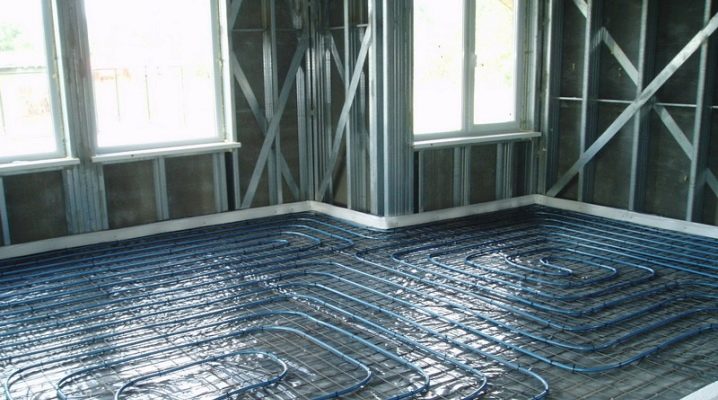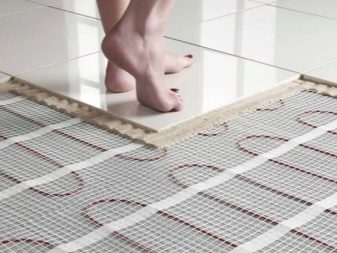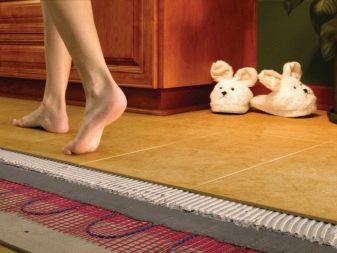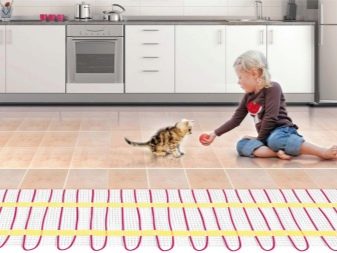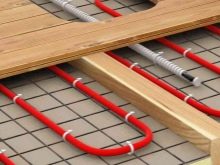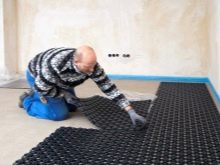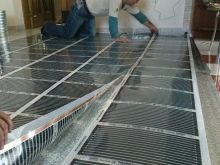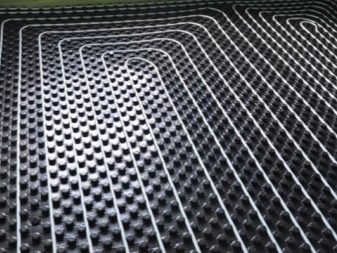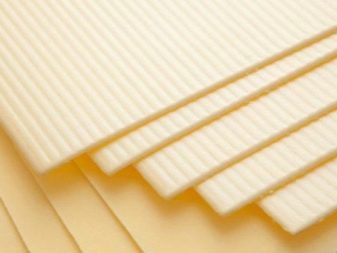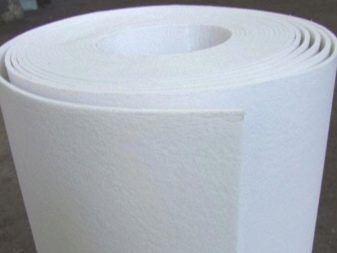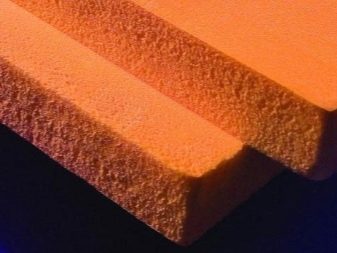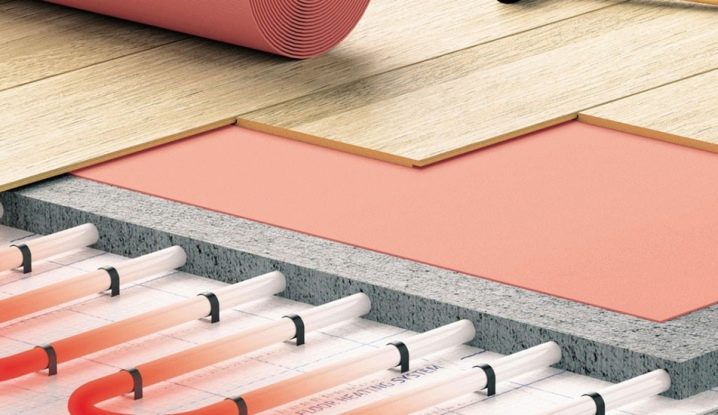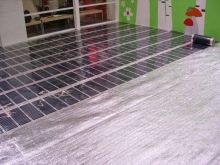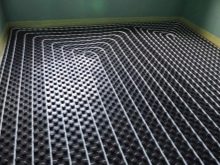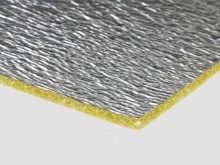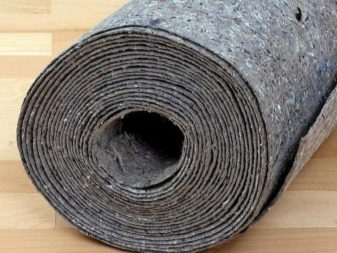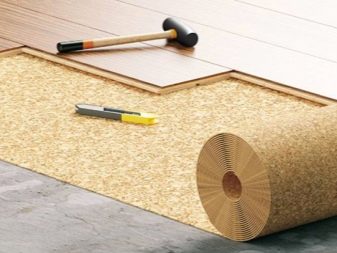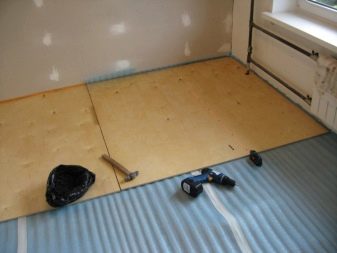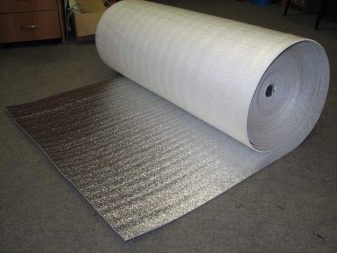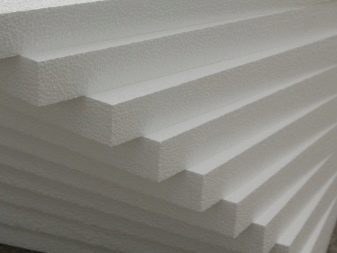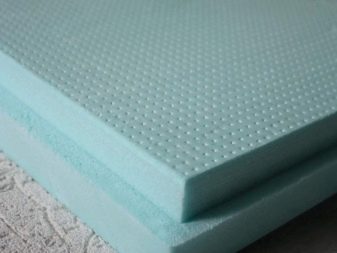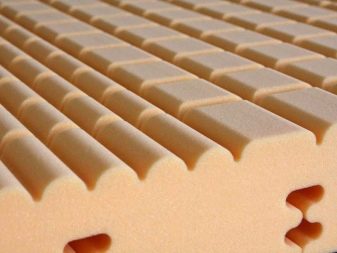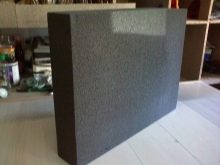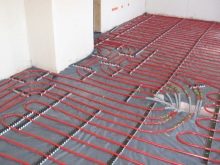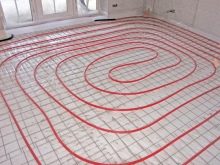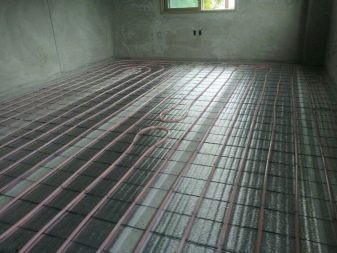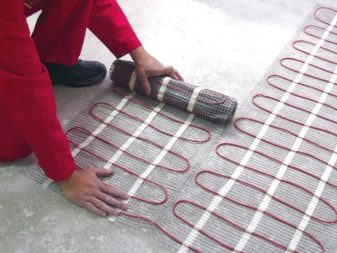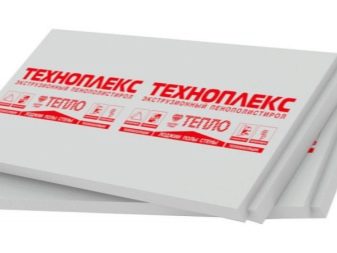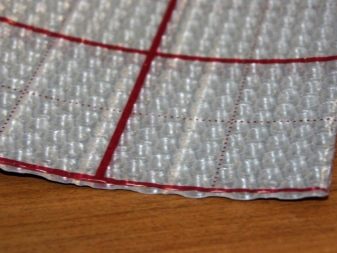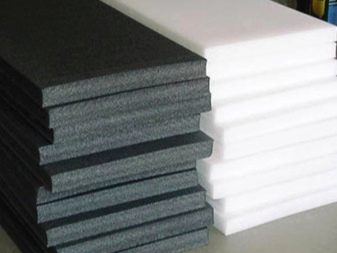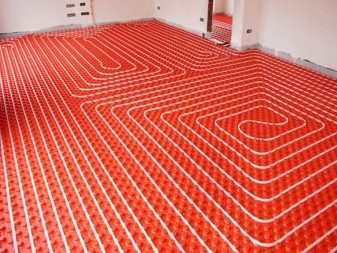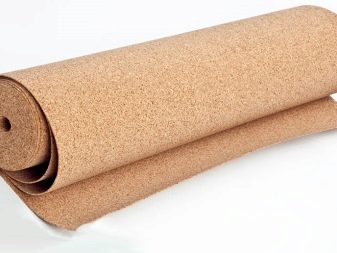Substrate for underfloor heating: purpose and types
The popularity of floor heating is rapidly gaining momentum. Keeping your feet warm is undoubtedly very pleasant. Such a system is quite capable of replacing traditional heating methods. The only thing that slows down the jump into the heating future is the problem of heat loss. It has been experimentally proved that the efficiency of a warm floor directly depends on the thermal conductivity of the final coating and the level of thermal insulation of the substrate.
Features and Purpose
The heat-insulated floor is the multilayered design providing uniform warming up of the room from below, unlike classical radiators and convectors. Two types of underfloor heating are common - electric and water.
Their almost identical structure includes:
- base - concrete or draft wooden floor;
- substrate, which serves as a gasket between the base and the heating element. It performs the function of hydro and heat insulation;
- a heating element;
- concrete screed floor;
- topcoat (tile, laminate, parquet, etc.).
The substrate in this structure blocks the flow of thermal energy into the floor and redirects it to the top. This is further facilitated by the reflective coating of most insulating materials (foil or metallized polymer film).
It also contributes to the uniform heating of the floor without pronounced warm or cold areas. As a result, we obtain a reduction in heat leakage, an increase in the efficiency of a heated floor, and an economy of energy costs, and therefore finances.
Another function is the barrier function. The substrate prevents penetration of cold, steam and moisture. It is most important for the floor on the ground or above the basement.
Substrate requirements
To choose a suitable substrate for underfloor heating will cost you in terms of service life and installation costs.
Each system has its own requirements, among which it is customary to single out:
- Thermal insulation. The lower the thermal conductivity of the material, the more appropriate is considered lining under the warm floor. As a rule, the best thermal insulation properties are achieved due to the greater thickness of the substrate. However, not all rooms it works. As it is not always possible to raise the floor level additionally. In this case, you have to put more subtle options. On the positive side, samples from foamed polymers with a heat-reflecting coating showed.
- Resistance to stress. Earlier it was noted that the warm floor consists of several layers. The substrate as the lowermost is experiencing the weight of the rest of the structure, as well as the load when walking. Constant pressure leads over time to its pressing. This is more characteristic of porous materials. On the deformed areas of the lining, the heat conductivity indices increase and, accordingly, the efficiency of the entire system decreases. In this case, materials with higher density are preferable.
- Waterproofing. This criterion is important for a water floor system. Leakage is equally harmful for both concrete and wooden base.Yes, and the neighbors below this gift will not be happy. Detecting leakage of pipes in the presence of waterproofing is more difficult, but possible. In this case, the indicator is the water pressure drop. Waterproofing is not so important for a classic electric floor system, as the cables and heating mats have their own. But film infrared floors absolutely do not tolerate moisture, so full isolation is necessary both from below and from above.
- Manufacturability. Under this characteristic refers to the ease of installation of the substrate. Compare a few examples:
- Polystyrene foam is very easy to install. It is thin, flexible, easily cut with scissors, sold in compact rolls. Working with him is a pleasure, if you forget about the big minus - deformation under load.
- Extruded polystyrene foam in rolls It is a strip of rectangular segments connected by foil-coated film. Cutting it is more difficult due to the thickness, and the seams need to be sealed. All inconvenience overlaps a big plus - this is a great heater. A high density of the material, prolongs its performance. (Fig. 2)
- Extruded Styrofoam sheets - laying is easier, but it will be necessary to seal up a greater number of seams.
In fact, all three options are made of the same material, but the form of delivery determines their manufacturability.
- Environmental friendliness. Each of the synthetic linings to some extent emit toxic substances when heated. Naturally, the less evaporation, the better, especially for residential premises.
- Resistance to biological influences - completely absent from substrates of natural materials. The situation is slightly saved by antibacterial treatment. However, it is not recommended to use it as a heater.
- Soundproofing - this is generally a big plus (for apartment buildings), but for the functionality of a heated floor does not matter.
- High temperature resistance - allows you to mount heating elements directly on the film. On the market are samples that can withstand up to plus 90 degrees Celsius.
- Additional qualities. The products of some manufacturers come with markings or bosses (bulges), which help to quickly and uniformly install heating elements (pipes, wires).
A few words about UV resistance.
The presence of this criterion in the list of characteristics of the substrate under a warm floor is nothing more than a marketing ploy, since it will not be exposed to direct UV radiation in any way.
Kinds
Each type of substrate has a number of features that depend on the material used for their production.
Natural
Natural lining in spite of its environmental friendliness is not very suitable for a warm floor. The main reason is susceptibility to biological degradation and sensitivity to moisture. If such material is not treated with antifungal compounds and is not isolated from the influence of water, then the duration of its service is not more than a couple of months.
The most common in the construction of the following substrate of natural origin:
- Jute - made from purified jute fiber by non-woven method (needle-punched). It is delivered in rolls with various thickness options - from 2 to 5 mm. Hygroscopic, and after drying does not change size. It has excellent sound insulation. In the system of warm floor is appropriate to use it only under the finish.
- Felt. Here you need to clarify that not every felt material is natural. It can be made from both animal fur and synthetic fibers. Its thickness varies from 1 to 10 mm. It is characterized by sound and heat insulation. Most successfully used in tandem with soft floor coverings.
- Corkboard - it is a pressed material made of crushed cork oak bark. The gluing element is a natural substance - suberin, which is contained in the bark of some plants. It gives the material water and gas impermeability, as well as low thermal conductivity. Cork substrate is resistant to deformation, hypoallergenic, durable. Sold in the form of rolls with a thickness of 2-4 mm and mats - 4-10 mm. This is a good option for floor heating. Among the minuses can be noted sensitivity to excess moisture and high price.
- OSB, chipboard, plywood - are used for installation of a heat-insulated floor according to the Finnish technology, without a classical concrete screed. You should choose materials with a low content of formaldehyde, since when heated, the emission of harmful substances increases.
Synthetic
Substrates of artificial origin are characterized by the absence of a favorable environment for the development of bacteria and fungi. On sale there are samples with and without reflective layer.It should be noted that the foil coating does not withstand contact with concrete and collapses after a couple of months. Among the synthetic types of substrate emit such varieties.
PE foam
It is an insulating material obtained by foaming polyethylene with hydrocarbons.
Strongly settled in the construction industry due to the following properties:
- low thermal conductivity;
- preservation of strength and elasticity at extremely low temperatures (up to - 60);
- resistance to aggressive environments;
- soundproofing;
- non-toxic, even when burning;
- water tightness;
- profitability.
Among the minuses should be noted the flammability of the material (at temperatures above 102 degrees begins to melt), susceptibility to deformation without recovery under prolonged loads. Polyethylene foam is of two types: unstitched and cross-linked (by chemical or physical means). In the latter, wear-resistant qualities are somewhat higher.
Styrofoam
Extruded polystyrene foam is the most popular substrate for underfloor heating.
Available in sheet form with a thickness of 10 to 120 mm. Externally similar to conventional foam, but is more durable and resistant to high loads. It meets almost all the requirements of floor insulation.
With all its positive properties, polystyrene foam has several disadvantages: it is flammable and unstable to most solvents.
Foamed polystyrene is also made into a perforated substrate, which is used in the underfloor heating system. The presence of holes increases the thermal conductivity of the material and allows warm air to break through to the surface.
Polyurethane foam
It has the lowest thermal conductivity among all insulating materials. High water resistance, sound insulation, resistance to acid and alkaline environments, to chemical and biological effects, fire resistance, ease of use make this material almost ideal for a system of warm floors.
Mineral
Among the mineral insulation emit:
- Foam glass. Absolutely positive material from environmental, technological and insulating points of view. The only negative is the high cost compared to other samples.
- Mineral wool. It is used as an insulator only under the condition of perfect waterproofing on both sides. This is due to the fact that with prolonged exposure to water, it loses its insulating properties.
Which one to choose?
Despite the fact that all types of substrates are almost universal, there are still some nuances in the choice. The final decision depends on the chosen heating system: water or electric.
Water floor
When choosing a heat-insulating layer for a water floor, its strength characteristics should be considered first of all. In this regard, suitable polystyrene foam, polyurethane foam, chipboard or plywood (for the floor without screed).
The location of the floor is taken into account. For example, a heat insulator with a thickness of up to 25 cm is laid on the ground for the floor. A couple centimeters will be enough for the second and subsequent floors. If raising the level of the floor at the expense of the substrate for some reason is unacceptable, choose thinner materials (polyethylene foam, multifoil).
Waterproofing properties will protect the lower floors from possible leakage.
The need to fix the pipe at a certain distance inclines to the choice of the substrate with the bosses.
A significant advantage will be the presence of the material of the reflective layer (polyester or foil).
Electric
Under the electric floor the best option would be thin types of substrates of technical cork or foamed polymers.Polystyrene lining can withstand heavy loads, it can even be put under a concrete screed. Materials with a foil reflective layer should be avoided (especially for film floors), since aluminum conducts electricity well. In this case, a lavsan coating or, in extreme cases, a foil protected by PVC film would be suitable.
Firms
Among the well-known manufacturers of insulating materials for floor heating systems include:
- TechnoNIKOL Corporation. The extruded polystyrene of the Tekhnopleks brand developed especially for private housing construction is best known from this manufacturer. The insulator is supplied in the form of slabs with a thickness from 10 to 100 mm.
- Valtec Company produces a combined material - multifolg consisting of a layer of polystyrene foam, a layer of foil and a film that protects against aggressive media. In particular, the alkaline environment created by the concrete screed.
- Penoterm has an assortment of Penohome foam polyethylene and Penopremium foam polypropylene substrate. Both options are covered with ribbed polyester film.
- Arbiton Izo-Floor produces extruded polystyrene foam in rolls and mats.
- Korean substrate manufacturer DH-Hilon made of polypropylene with mylar coating.
Successful examples
According to most users, the most successful will be the design of a heated floor with an extruded polystyrene backing. Here and heat, and hydro, and noise isolation. Plus resistance to mechanical stress.
If the environmental friendliness of the product comes to the fore, you will have to spend money on cork insulation. Compared with other natural substrates, it most closely meets the requirements of a warm floor.
Thin substrates of polyethylene foam will help out, if you need a minimum thickness of the structure. True, the question of durability and excellent insulating properties in this case is quite controversial.
An overview of the substrate under a warm water floor can be viewed in the next video.
